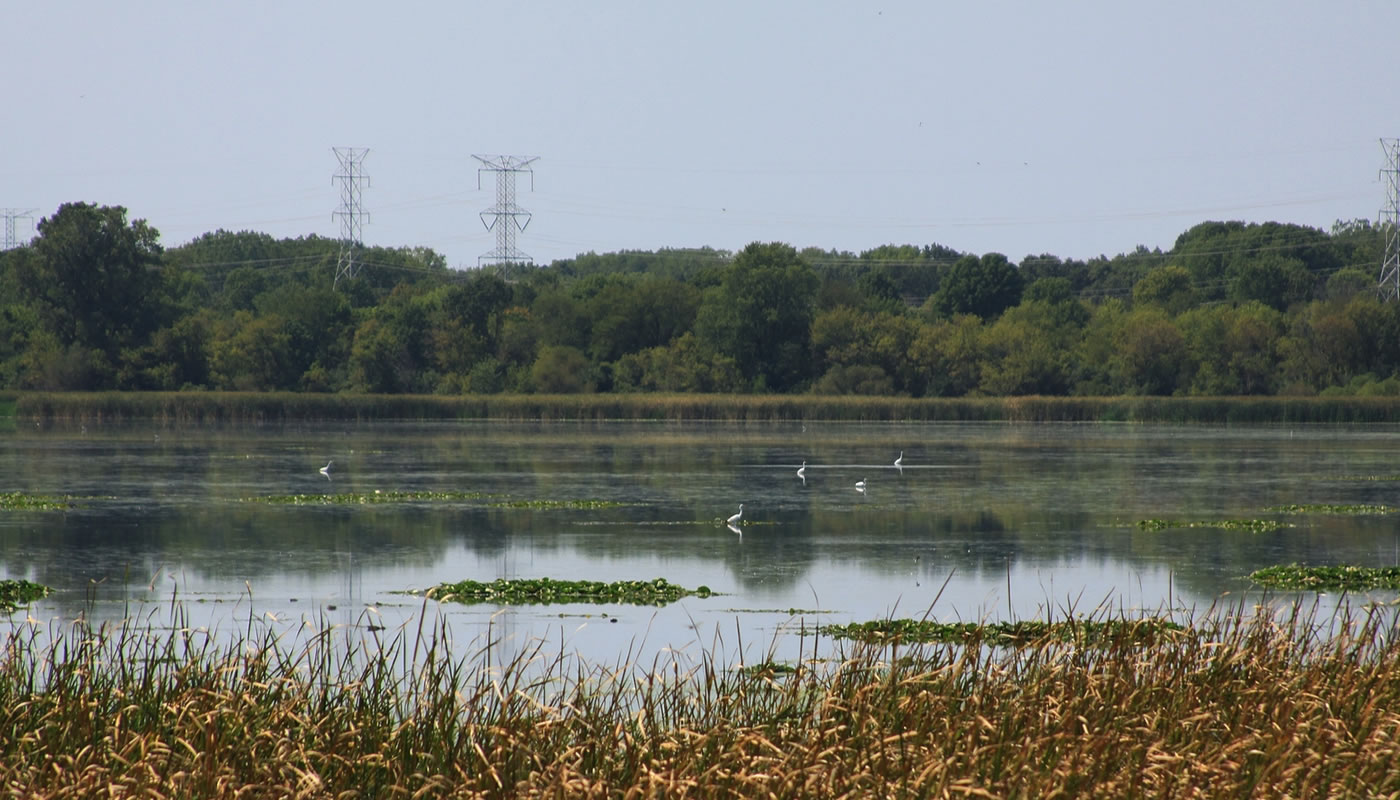Drivers passing McGinnis Slough, a shallow, 300-acre body of water west of LaGrange / 96th Avenue and south of 131st in Orland Park, may notice the water level dropping fairly dramatically during the summer. More than evaporation from summer sun, this drop is actually part of an intentional program to benefit migratory shorebirds. Every summer, Forest Preserves fisheries staff draw down the water level, opening a valve on a water control structure at one end of the slough and letting gravity do the rest.
The annual drawdown begins in early July when the marsh birds, including species such as grebes, coots and least bitterns, have stopped breeding. Around this time, shorebirds, such as plovers and sandpipers, start to arrive, as well as waders, such as herons and egrets. Dropping the water exposes sometimes hundreds of acres of mud flats, which give the birds a plentiful place to rest and feed as they migrate from their nesting grounds in the Arctic to their winter grounds in Central and South America. Shorebird numbers start to increase through July and August and peak early to mid-September.
The drawdown helps control the carp at McGinnis Slough as well. These non-native fish feed along the bottom, uprooting vegetation, destroying the nest and eggs of native fish and degrading habitat for aquatic invertebrates, amphibians and reptiles. The drawdown actually allows waders to catch carp more easily, since they have much less room to escape.
The abundance of vegetation on the mud flats also attracts migratory waterfowl, such as ducks and geese. These use the slough for resting and feeding as they migrate south for the winter.
Around late September or early October, staff will close the valve and the process will start over next year. The practice of drawing down the waters of McGinnis Slough continues to give migratory birds a home away from home.

